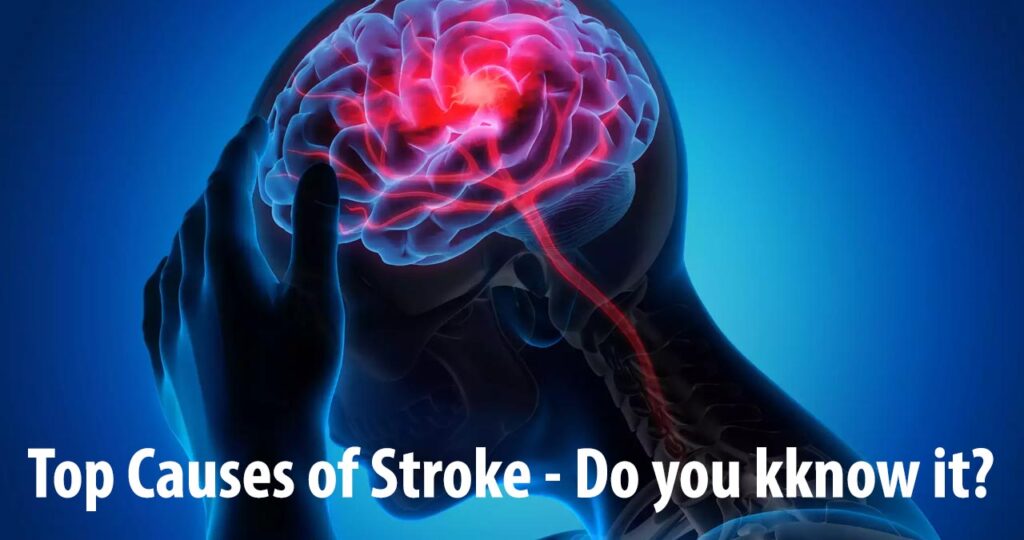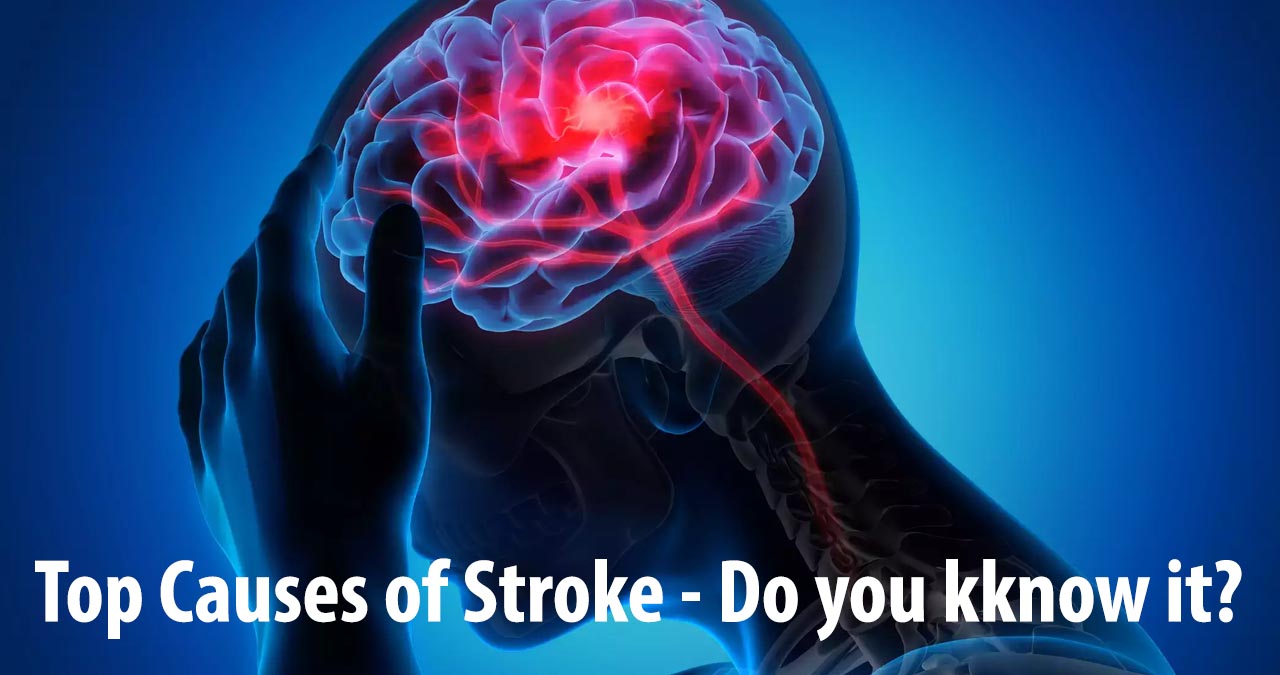Stroke can occur in any age group, but it’s more likely to occur in middle age and older. After age 55, the risk of stroke doubles. It can also occur during childhood, with the highest risk of stroke occurring in the perinatal period, which is the final few months of fetal life and the first few weeks after birth. Men are at higher risk of stroke, especially in middle age, but not as much as women.

High blood pressure
One of the top causes of stroke is high blood pressure. When blood pressure is too high, it damages the walls of the arteries. This damage can lead to two types of stroke – hemorrhagic strokes and clot-based strokes. High blood pressure can also damage the arteries, making them more susceptible to rupture.
High blood pressure is a silent killer, affecting nearly half of US adults. It increases the risk of developing many health conditions, including stroke, without any visible signs of ill health. While hypertension is one of the most common causes of stroke, it’s also one of the most easily controllable.
One way to lower the risk of stroke is to take proper medications. These medications will lower blood pressure enough to prevent a stroke. However, if your blood pressure rises suddenly, you should seek immediate medical help. The sooner you start taking medications, the less likely you are to suffer a stroke.
The pressure of blood against the walls of the arteries is measured by systolic blood pressure (SBP) and diastolic blood pressure (DBP). A normal systolic blood pressure is below 120 mm Hg and less than 80 mm Hg. Blood pressure over 130/80 mmHg is considered hypertension. In some cases, the pressure can rise above this level for a long period of time, and it’s a warning sign that the blood pressure may be high.
High blood pressure is the number one cause of stroke in the United States. A stroke is an obstruction of blood flow to a portion of the brain. If this happens, brain cells begin to die and lack oxygen. There are two main ways this can happen. If the artery supplying the brain is narrowed, fatty deposits can cause a blood clot and travel to the brain.
Blood clots
A clot in the blood can travel to the brain and cause a stroke. Ischemic stroke occurs when a blood clot forms in an artery and blocks the flow of blood to the brain. Other types of strokes include hemorrhagic stroke and embolic stroke. Some clots can form in the heart or upper chest, but the majority occur in the brain.
People who have a high risk of clotting their blood should consider quitting smoking and losing weight [Read: Puradrop Weight Loss Reviews by Real User and Compalints]. If you’re taking blood-thinning medicine, it is important to discuss your treatment options with your doctor. If these measures do not work, discuss an alternative. This type of medicine can reduce the risk of stroke and may help prevent a stroke.
If your doctor believes you have a clot in your blood vessel, he or she may prescribe anticoagulant drugs to help prevent blood clotting. There are several types of anticoagulants, including warfarin, which is a powerful blood-thinning drug. However, it is essential to take it regularly and as directed.
People who have a history of stroke are at higher risk. People with high blood pressure and diabetes are also at increased risk [Also read: Blood Sugar High In The Morning: How To Regular It?]. Smoking damages blood vessels and increases blood pressure. People with atrial fibrillation are also more likely to have a stroke than people without it.
A slight tear in an artery can result in a clot that travels to the brain and causes a stroke. These tears can be caused by a migraine, a trauma, or even minor trauma. People who experience these symptoms should see a doctor as soon as possible to make sure they are not suffering from a stroke.
Migraine
Although stroke and migraine share some symptoms, the two conditions are different in many ways. While a stroke usually has a sudden onset and peak intensity, a migraine has a gradual buildup of symptoms. A migraine headache also has positive symptoms, such as flashes of vision and tingling in the skin.
A person suffering from a migraine is at a higher risk for a stroke than someone without migraines. In fact, a migraine can mimic a stroke, so if you think you have one, it is important to get medical attention as soon as possible. Stroke risk is especially high in people with certain medical conditions. Some of these include sickle cell disease and certain metabolic conditions. If you are at risk, go to the emergency room and get the proper care.
Although the relationship between migraine and stroke is well established, the association between migraine and structural brain lesions is not yet fully understood. Nevertheless, it is likely that having either condition increases the risk of stroke. However, there is no evidence that it requires different treatment or prophylactic measures for migraine.
Recent imaging studies have shown that acute stroke patients with a migraine history have a higher risk of cerebral ischemia. These studies suggest that migraine and stroke are associated with increased infarct growth and the presence of little potentially salvageable brain tissue. The association between the two conditions seems to be complex and should be studied further.
It is not entirely clear how migraine and stroke relate to each other, but migraine sufferers are more susceptible to strokes when they experience an aura. However, this risk is significantly reduced in younger migraine sufferers. This study highlights the importance of identifying the triggers of migraine.
Medications
While it may seem that there is no single cause of stroke, studies have shown that a number of different medications can increase the risk. Many people take antiplatelet drugs to prevent clots in blood vessels. Antiplatelet drugs like aspirin, dipyridamole, and clopidogrel reduce platelet activity, which is crucial for blood clotting. These medications can also lower the risk of ischemic strokes.
The first step is to talk to your doctor about any medications you are taking. You should discuss any change in dosage or frequency with your doctor. Some people can suddenly stop taking their medications without warning, and this can result in stroke. If you are taking medications and have a change of heartbeat or other symptoms, you should contact your doctor right away.
If your doctor suspects that your stroke is caused by medications, he or she may prescribe thrombolysis to help stop the bleeding. This treatment is most effective when started soon after a stroke. The procedure involves inserting a small tube through a catheter into a blood vessel that has cloted. Once this is done, doctors can then use suction to remove the clot.
Other treatments for stroke include supportive care, such as physiotherapy, to help reduce the chances of future strokes. These therapies can help people regain their language skills, improve breathing muscle control, and improve muscle strength and balance. Depending on the type of stroke you’ve had, your healthcare provider may also recommend speech therapy or physical therapy to help you regain your skills and function.
Other medications are available to help treat symptoms of stroke. Some of the more common ones are thrombolytic drugs, which break up existing clots in the blood and reduce the severity of the stroke. These medications are also effective in lowering cholesterol levels and lowering blood pressure [Learn more: 5 Food Items That May Help Manage Healthy Blood Pressure].
Social factors
Social factors are associated with a higher risk of stroke than physical factors, according to a recent study. The REGARDS study looked at a sample of 27,813 Black and white adults and tracked 1,470 cases of stroke during a 10-year follow-up period. The most important social determinants were race, income, ZIP code poverty, and social isolation. People who had three or more of these determinants were at a 50 percent greater risk of having a stroke than those who had none.
The results of this study suggest that the prevalence of stroke is increasing in underserved communities, which are particularly susceptible to the disease. This is despite advances in stroke prevention. While social determinants of health are difficult to change, early interventions can help mitigate their effects. Several limitations were observed, however, including self-reported data and the fact that the study included only white and black participants. The study also excluded data on tobacco use and environmental factors.
Despite these limitations, the study’s findings are noteworthy. While there is still much work to be done, there are some important steps that physicians can take to make stroke prevention more effective. For instance, health professionals should screen for the presence of small social networks in patients. They should also discuss the importance of social relationships for health and well-being. Furthermore, health professionals should provide information about social resources in their community.
Although environmental air pollution is one of the leading risk factors for stroke, it is not the only factor. Poverty can make it more difficult for people to live a healthy lifestyle, and it also limits access to quality health care.

